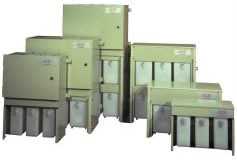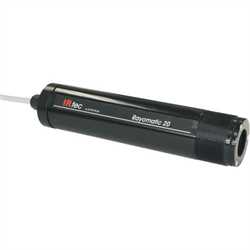Aoip MICROK 3-channel Expandable Precision Thermometer
BRAND : Aoip
The MicroK family of precision thermometers uses a completely new measurement technique to achieve accuracies better than 0.02 ppm.
With four models to suit all levels of temperature metrology from National Measurement Institutes to those wanting a solution to make low uncertainty temperature measurements in a range of applications.
In addition to making the best resistance measurements the MicroK makes high accuracy thermocouple measurements with a voltage uncertainty of
First introduced in 2006 the MicroK has proven use at the world’s leading NMIs and many commercial laboratories. Af...
Details
The MicroK family of precision thermometers uses a completely new measurement technique to achieve accuracies better than 0.02 ppm.
With four models to suit all levels of temperature metrology from National Measurement Institutes to those wanting a solution to make low uncertainty temperature measurements in a range of applications.
In addition to making the best resistance measurements the MicroK makes high accuracy thermocouple measurements with a voltage uncertainty of
First introduced in 2006 the MicroK has proven use at the world’s leading NMIs and many commercial laboratories. After years of experience and success we now introduce new models with even better performance and new features. All microK models now include IEEE-488 General Purpose Interface Bus as well as RS232 and USB. The microK 70 and microK 125 also feature an Ethernet port and can be monitored and controlled across a LAN.
When used with a 0°C cold junction reference unit, or by measuring the junction temperature with a PRT on another channel, the instrument is capable of low uncertainty precision thermocouple measurements, with a voltage uncertainty of just 0.25 ?V, equivalent to 0.01°C with a Platinum / Gold Thermocouple at 1000°C.
The instruments in the MicroK range offer performance characteristics and features which are simply not available elsewhere. Comparable instruments available internationally do not achieve the same accuracy or stability (zero drift characteristics with SPRT measurements are not obtainable in any other instrument), other instruments do not support the same variety of sensors, and offer considerably less operational features. The MicroK family uses solid state construction with no potentiometers or relays, which ensures long term reliability and low cost of ownership.
Highly stable
The inherently stable “substitution technique” used in the MicroK means that it achieves zero drift for resistance measurements and only 3 ppm/year for voltage measurements so you can be confident in your measurements between calibrations.
Versatile
This is the only instrument of its type that works with SPRTs, thermocouples and thermistors, so you only need to purchase one product for your thermometry application rather than two or more instruments.
Easy to use
The MicroK includes a comprehensive range of features, including direct reading in temperature for all sensor types, data logging, easy export of data to Excel and graphing facilities. Despite its sophistication the MicroK is very easy to use. The built-in full 6.4” full VGA colour touch screen, powered by the Windows CE operating system provides a familiar and powerful operator interface so you can get on with making measurements rather than learning how to control the instrument.
Best practice ready
Best practice guidelines recommend the use of two reference thermometers for calibrations. This is why we have included three channels in the MicroK, enabling you to achieve best practice without having to buy additional and costly multiplexers.
Low noise
The new ADC, together with the low noise pre-amplifiers used in the MicroK, means you achieve a lower measurement uncertainty in a shorter time.
Keep-warm current
The MicroK includes keep-warm current sources to maintain the power in a PRT when it is not being measured, eliminating uncertainty resulting from power coefficients.
MicroK 400 and 800
These models were first introduced in 2006 and set a new standard for temperature measuring instruments. With innovative features and performance of 0.4 and 0.8 ppm, these are the instruments of choice for secondary laboratories.
MicroK 100 and 200
Retaining the features and innovation of the original MicroK, these models introduced in 2009 incorporate a measurement engine with improved linearity and advanced parallel analogue processing giving primary laboratory performance of better than 0.1 and 0.2 ppm. A further innovation is the ability to automatically compute and display the zero current resistance with no manual correction.
MicrosKanner
The MicrosKanner replicates the input system of the MicroK for all of its 10 input channels. Measurements made with a MicrosKanner are therefore to the same uncertainty as the MicroK itself. A MicroK system can be expanded to a maximum of 92 channels without losing measurement performance.
The use of plug-and-play technology means that the extra channels appear automatically on the MicroK when you connect it to a MicrosKanner. The new channels are configured in exactly same way as any of the MicroK’s existing inputs, through the MicroK’s touch screen or via the PC interface.
Key features:
- High accuracy: ±0.1 ppm according to models
- PRTs, thermistors and thermocouples
- Zero drift for PRTs
- Measurement time: < 2 s
- Keep-warm currents
- Expandable to 92 channels















